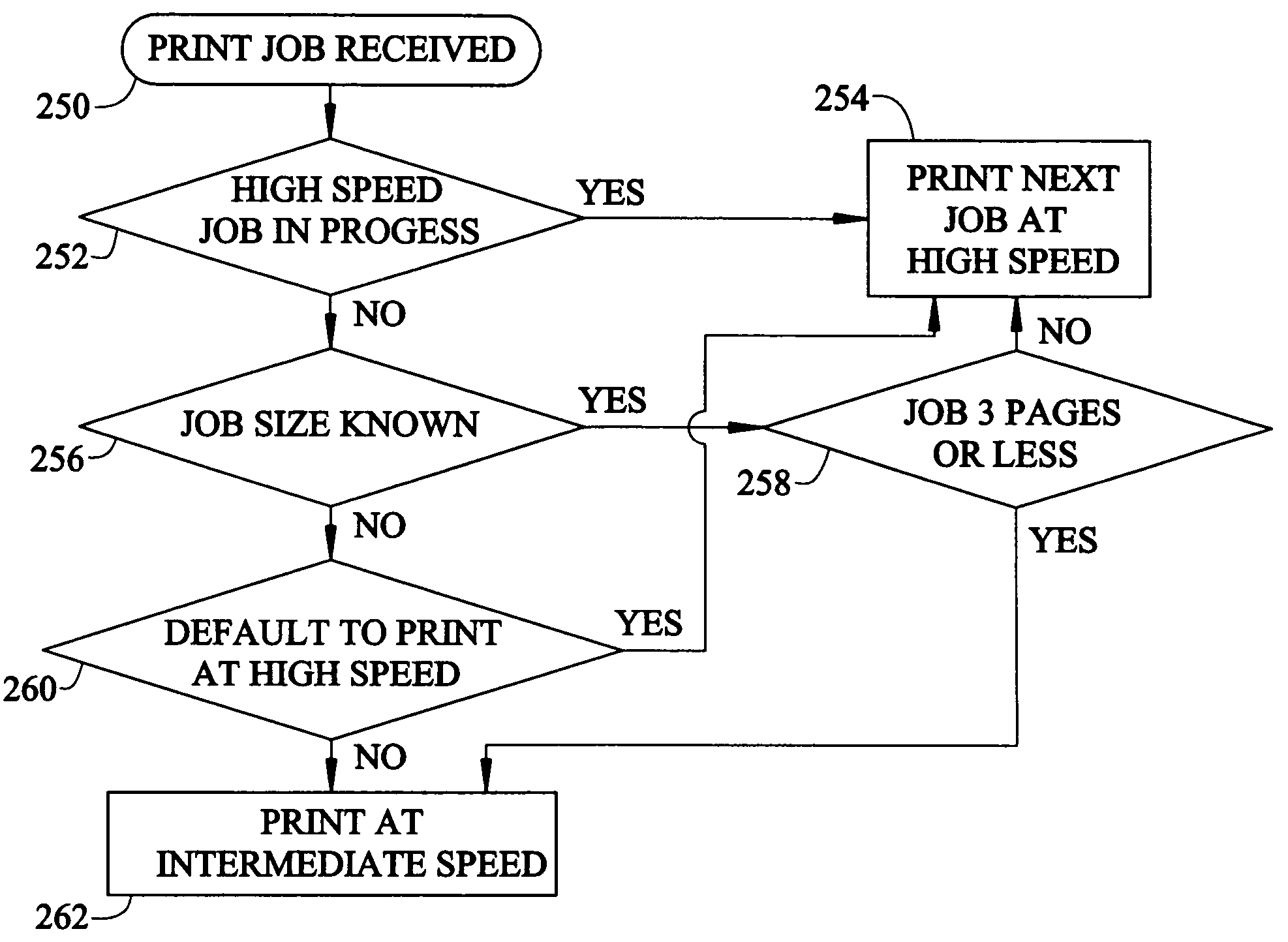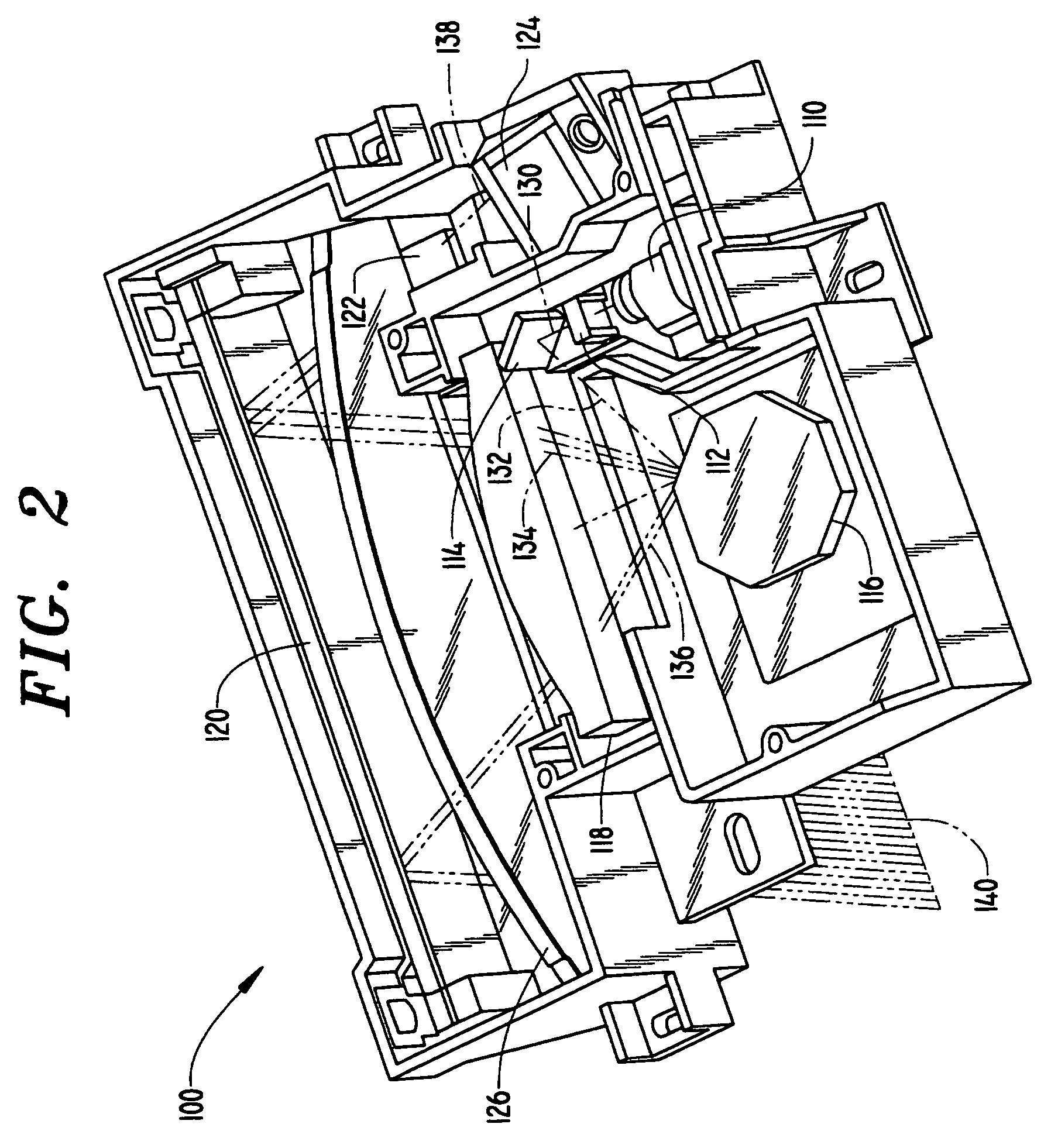Dynamic time to first print selection
a dynamic time and printhead technology, applied in the field of printing machines, can solve the problems of increasing the speed of printing machines and requiring longer times to reach lock, and achieve the effect of reducing the lock time of the printhead, fasting the time to first print, and fasting the overall printing tim
- Summary
- Abstract
- Description
- Claims
- Application Information
AI Technical Summary
Benefits of technology
Problems solved by technology
Method used
Image
Examples
Embodiment Construction
[0014]Printing System:
[0015]Referring now to the drawings, FIG. 1 shows a hardware block diagram of a laser printer generally designated by the reference numeral 10. Laser printer 10 will preferably contain certain relatively standard components such a DC power supply 12 which may have multiple outputs of different voltage levels, a microprocessor 14 having address lines, data lines and control and / or interrupt lines. Read Only Memory (ROM) 16, and Random Access Memory (RAM), are divided into several portions for performing several different functions.
[0016]Laser printer 10 will typically contain at least one network input (not shown), parallel input or USB port, or in many cases two or more types of input ports, so designated by the reference numeral 18 for the USB port and the reference numeral 20 for the parallel port. Each of these ports 18 and 20 would be connected to a corresponding input buffer, generally designated by the reference number 22 on FIG. 1. USB port 18 would typi...
PUM
 Login to View More
Login to View More Abstract
Description
Claims
Application Information
 Login to View More
Login to View More - R&D
- Intellectual Property
- Life Sciences
- Materials
- Tech Scout
- Unparalleled Data Quality
- Higher Quality Content
- 60% Fewer Hallucinations
Browse by: Latest US Patents, China's latest patents, Technical Efficacy Thesaurus, Application Domain, Technology Topic, Popular Technical Reports.
© 2025 PatSnap. All rights reserved.Legal|Privacy policy|Modern Slavery Act Transparency Statement|Sitemap|About US| Contact US: help@patsnap.com



